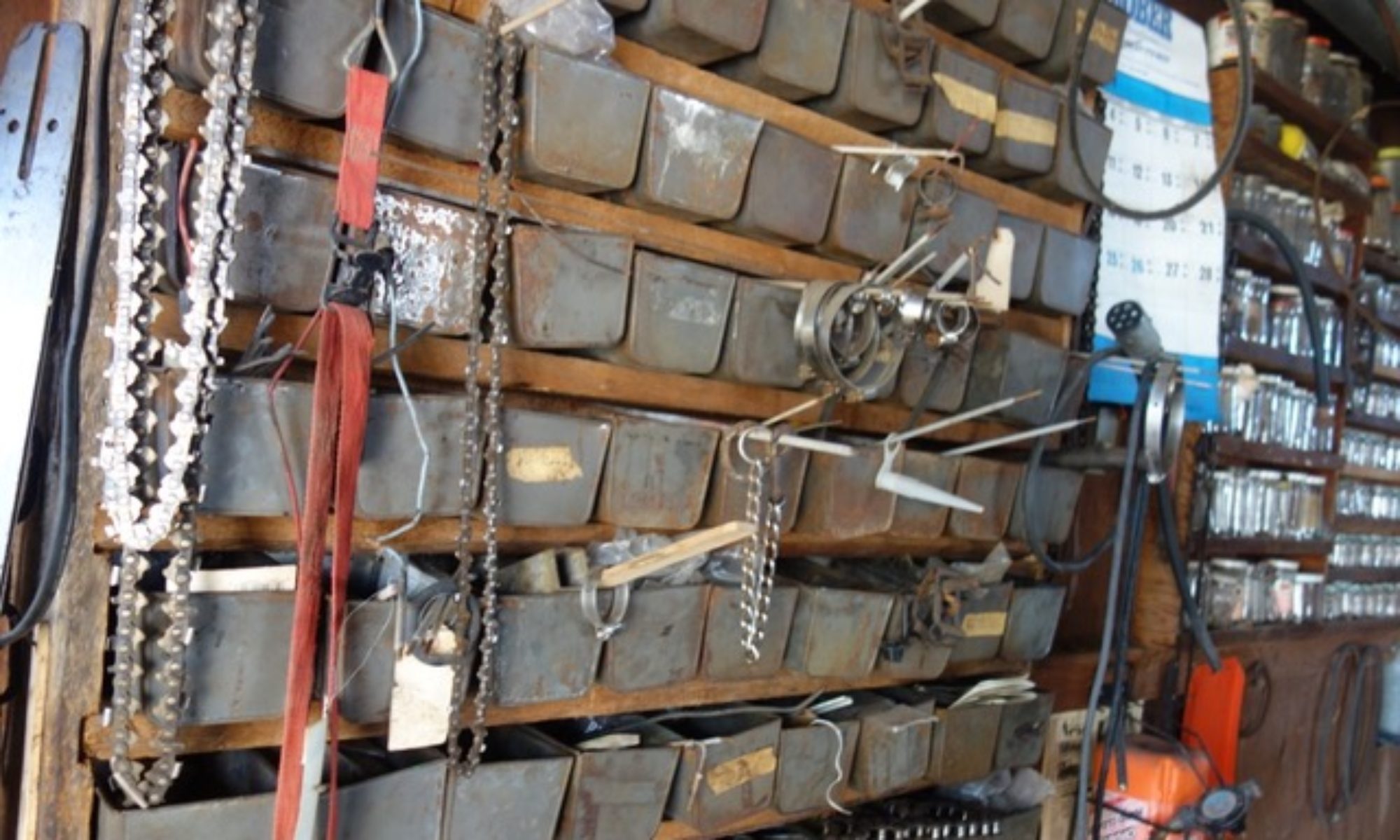EPISODE 242 YUKON DIARY RIDING THE WHITE PASS AND YUKON RAILWAY
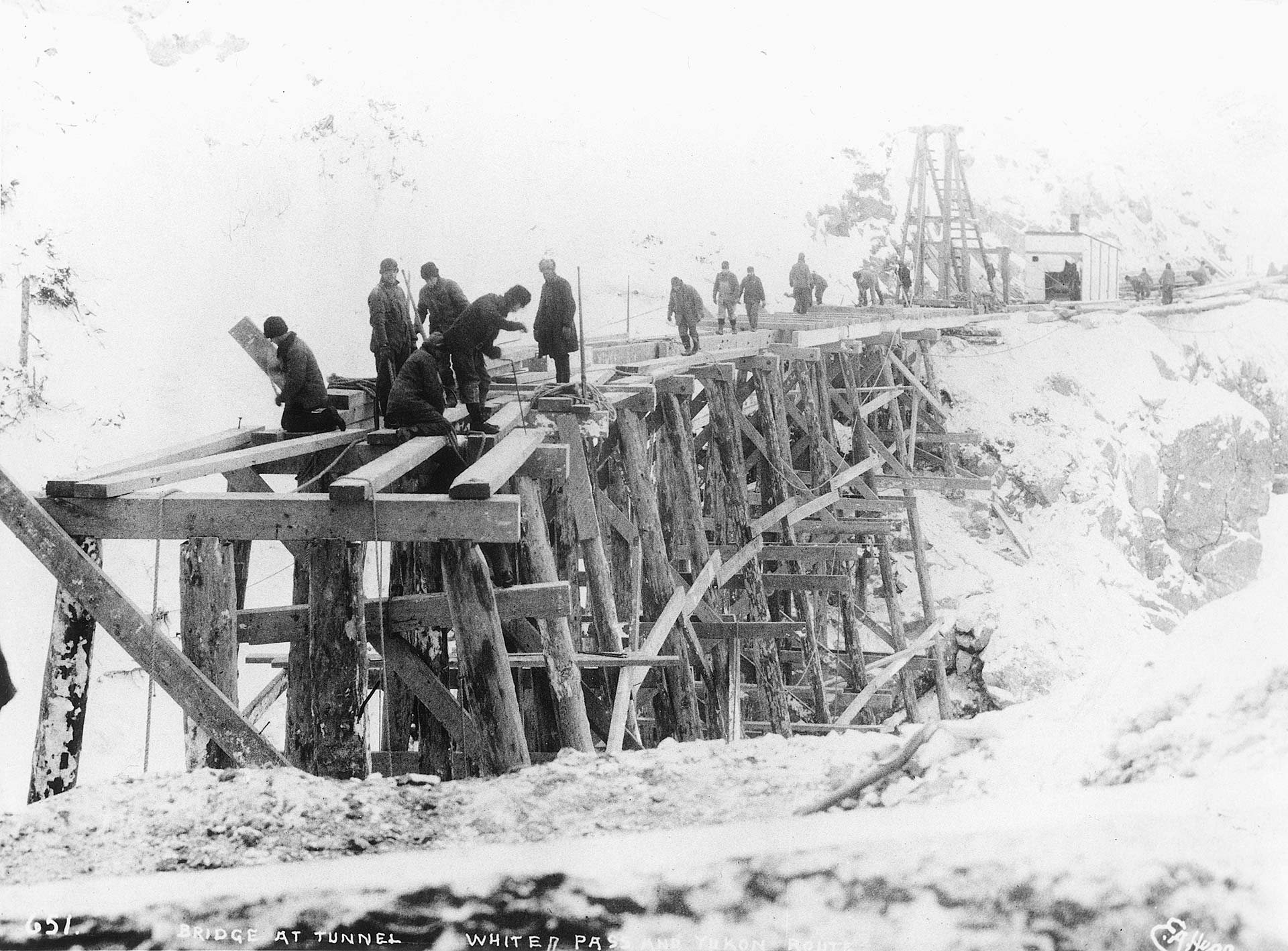

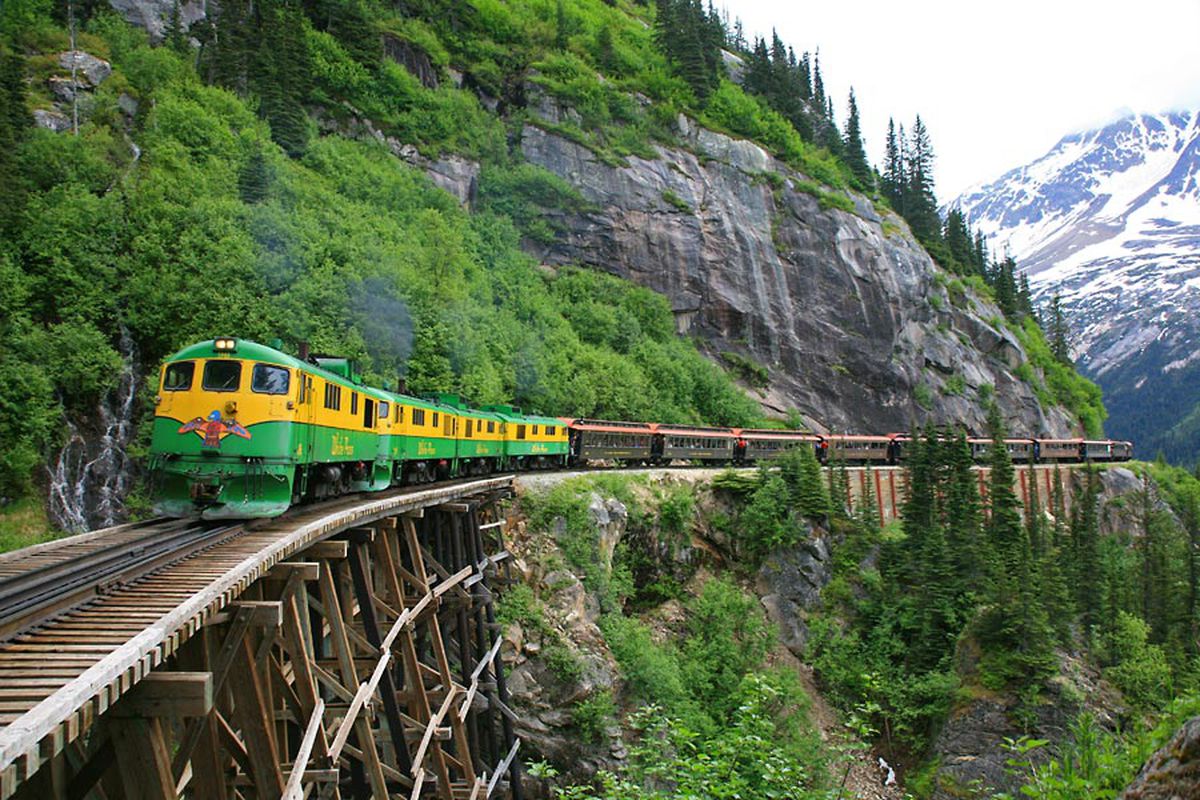
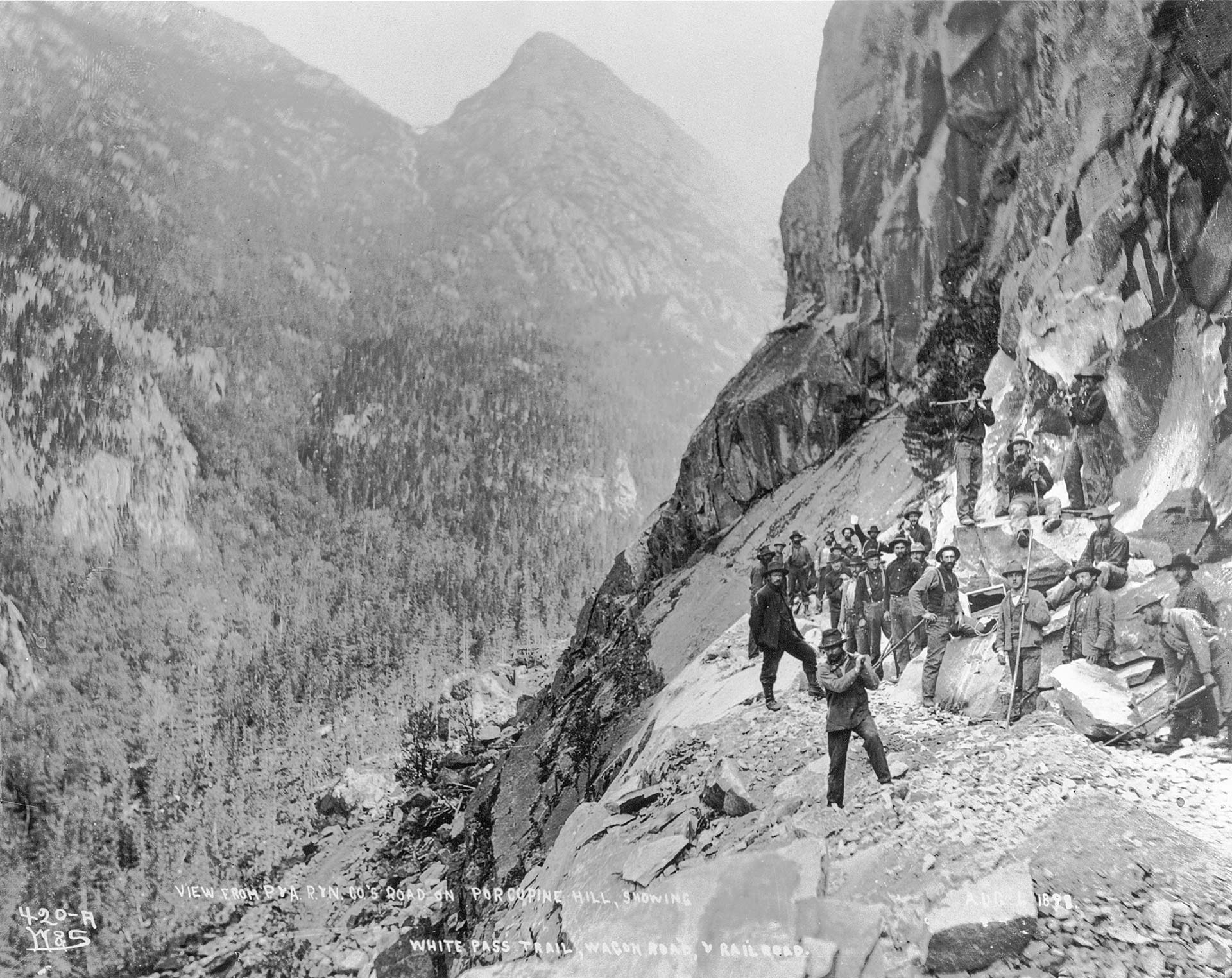

alan skeoch
FeB 2021

Wednesday Sept. 12, 1962
Dark and dreary day. Tough day for my ride on the White Pass Railway from Whitehorse
to Skagway. The downhill run. Narrow Gauge railway…3 feet between rails…cheaper
to build than a standard railway. The builders had enough trouble trying to find a route
over the Coastal Mountains. International…toughest part from White Pass to Skagway.
…only 107 miles long. Completed in 1900.
The White Pass and Yukon Railway was just about worn out by 1939…old engines
and old coaches. Relied on freight from Yukon mines…such as Keno Hill, Galena Hill
and others that shipped their concentrate down to Skagway and then by steamships to
refineries in the United States. The Great Depression led to the closing of many mines.
Then came the 1960’s…boom times for everyone.
Opened August 1, 1900
Closed October 2, 1982
Re opened May 24, 1988
NOTE: IN 1963, the year after I left the Yukon, 70 tons of stollen
silver ore was surreptitiously shipped from the Yukon. The story
will be coming shortly. An unbelievable adventure. This stollen silver
or was being moved to hiding spots near Elsa …The thief, Mr. Preist
was arrested by a fluke action taken by a White Pass trucker who wanted
a cup of coffee in Elsa before driving to Whitehorse. Priest was arrested
and testified that “the 70 tons of silver were his because the 70 tons “fell
from the Moon” I had no idea this was happening while we were
doing our survey. The story is riveting.
 |
|
| Commercial operations | |
|---|---|
| Original gauge | 3 ft (914 mm) |
| Preserved operations | |
| Reporting mark | WP&YR |
| Length | 107 miles (172 km) (Skagway to Whitehorse); 67.5 miles (108.6 km) (Skagway to Carcross) |
| Preserved gauge | 3 ft (914 mm) |
| Commercial history | |
| Opened | August 1, 1900 |
| Closed | October 8, 1982 |
| Preservation history | |
| May 24, 1988 | Reopened as The White Pass Route |
| Headquarters | Skagway, Alaska |
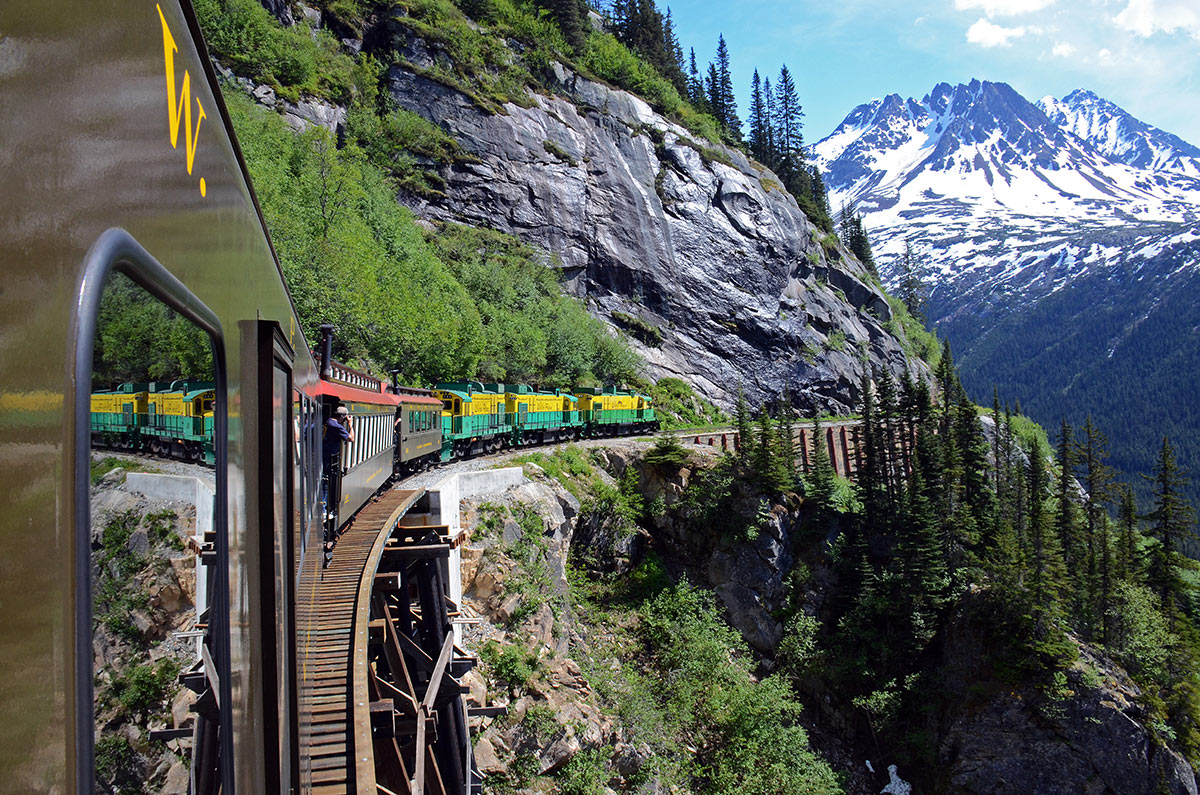

WHITE PASS AND YUKON RAILWAY…AND WORLD WAR II
(Critical supply source for the Alaska Highway)
Alaska became strategically important for the United States during World War II; there was concern that the Japanese might invade it, as Alaska was the closest part of the United States to Japan. Following the Attack on Pearl Harbor, the decision was made by the US and Canadian governments to construct the Alaska Highway as an all-weather overland route to ensure communication. One of the principal staging points for construction was Whitehorse, which could be supplied by the WP&YR.
By that time the railroad was a financially starved remnant from Klondike gold rush days, with well-worn engines and rolling stock. Despite this, the railroad moved 67,496 tons during the first 9 months of 1942, more than double its prewar annual traffic. Even this was deemed insufficient, and so the U.S. Government leased the railroad for the duration, effective at 12:01 a.m. on 1 October 1942, handing control to the United States Army. What became the 770th Railway Operating Battalion of the Military Railway Service took over train operations in company with the WP&Y’s civilian staff.
Canadian law forbade foreign government agencies from operating within Canada and its territories, but Japanese forces had occupied some of the Aleutian Islands by this time, and an accommodation was quickly reached to “make an illegal action legal.”
The MRS scoured the US for usable narrow-gauge locomotives and rolling stock, and soon a strange and colourful assortment began arriving at Skagway. The single largest group was seven D&RGW K-28 class 2-8-2’s acquired prior to the lease in August 1942. 2-8-0’s from the Silverton Northern and the Colorado & Southern, all over 40 years old, and a pair of ET&WNC 4-6-0’s soon appeared, among others, as well as eleven new War Department Class S118 2-8-2’s. WP&Y’s original roster of 10 locomotives and 83 cars was soon eclipsed by the Army’s additional 26 engines and 258 cars.
The increase in traffic was remarkable: In the last 3 months of 1942, the railroad moved 25,756 tons. In 1943 the line carried 281,962 tons, equivalent to ten years worth of typical prewar traffic. All this despite some of the most severe winter weather recorded since 1910: Gales, snowdrifts and temperatures of -30 degrees F. succeeded in blockading the line from 5 – 15 February 1943 and 27 January – 14 February 1944.
The peak movement occurred on 4 August 1943, when the White Pass moved 38 trains north and south, totalling 3346 gross / 2085 net tons, and 2236 locomotive-miles in 24 hours.[33]
ENJOY THE TRIP…THE PICTURES ARE MORE DRAMATIC THAN ANY WORDS
I COULD WRITE.



END EPISODE 242 YUKON DIARY
